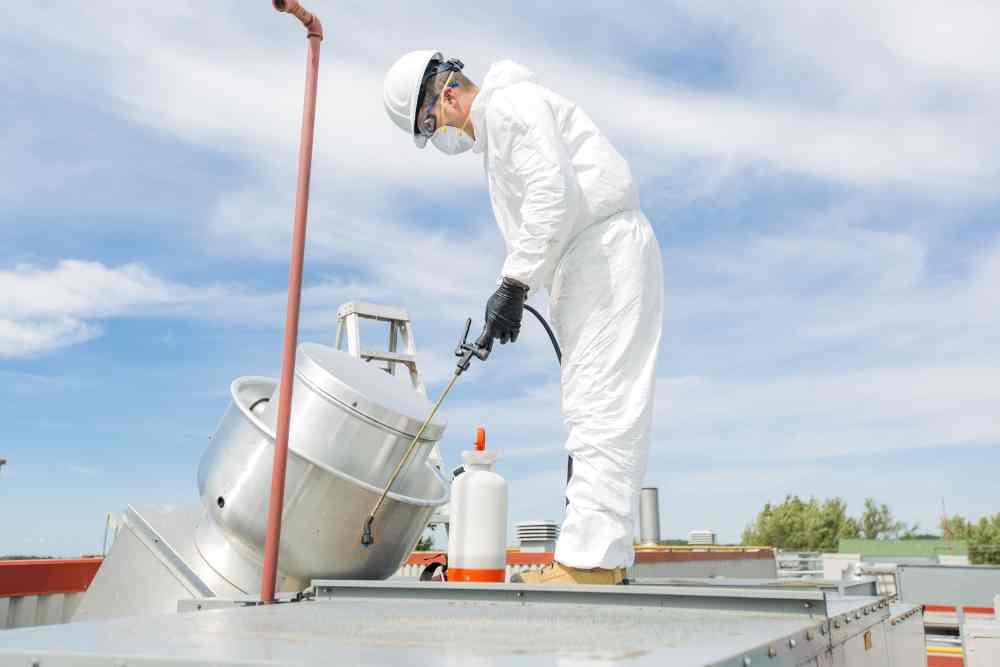Table of Contents
- How to Clean a Professional Hood
- Why is Cleaning a Professional Hood Important?
- The Step-by-Step Process of Cleaning a Professional Hood
- Step 1: Safety Precautions
- Step 2: Remove Grease Filters
- Step 3: Clean the Hood Interior
- Step 4: Clean the Hood Exterior
- Step 5: Reinstall Grease Filters
- Frequently Asked Questions about Cleaning a Professional Hood
How to Clean a Professional Hood

Keeping a professional hood clean is essential for maintaining a safe and efficient kitchen environment. A dirty hood can lead to grease buildup, fire hazards, and poor air quality. Regular cleaning of the hood and its components is crucial to prevent these issues. In this article, we will discuss the step-by-step process of cleaning a professional hood, along with some valuable insights and best practices.
Why is Cleaning a Professional Hood Important?
A professional hood, also known as an exhaust hood or range hood, is a vital component of any commercial kitchen. Its primary function is to remove smoke, grease, and odors from the air, ensuring a clean and safe environment for both the kitchen staff and customers. However, over time, the hood and its filters can accumulate grease and other debris, reducing its efficiency and posing a fire hazard.
Regular cleaning of a professional hood offers several benefits:
- Fire prevention: Grease buildup in the hood and its components can easily ignite, leading to a dangerous fire. By keeping the hood clean, you reduce the risk of fire and protect your kitchen and staff.
- Improved air quality: A clean hood effectively removes smoke, odors, and other pollutants from the air, ensuring a healthier environment for everyone in the kitchen.
- Enhanced efficiency: A clean hood operates more efficiently, allowing it to effectively remove smoke and grease from the air. This helps maintain a comfortable working environment and prevents the accumulation of grease on surfaces and equipment.
- Compliance with regulations: Many jurisdictions have specific regulations and guidelines regarding the cleaning and maintenance of professional hoods. Regular cleaning ensures compliance with these regulations and helps avoid penalties or closure.
The Step-by-Step Process of Cleaning a Professional Hood
Cleaning a professional hood involves several steps, each of which is crucial for achieving a thorough and effective cleaning. Let’s explore each step in detail:
Step 1: Safety Precautions
Before starting the cleaning process, it is essential to take necessary safety precautions to protect yourself and others in the kitchen. Here are some key safety measures to consider:
- Turn off all cooking equipment and ensure they are cool before cleaning.
- Wear appropriate personal protective equipment (PPE) such as gloves, goggles, and aprons.
- Ensure proper ventilation in the kitchen to prevent the accumulation of cleaning fumes.
- Keep a fire extinguisher nearby in case of emergencies.
Step 2: Remove Grease Filters
The grease filters in a professional hood are designed to trap grease and prevent it from entering the ventilation system. Over time, these filters can become clogged with grease and debris, reducing their effectiveness. Here’s how to remove and clean the grease filters:
- Locate the grease filters in the hood. They are usually located at the bottom of the hood, above the cooking equipment.
- Carefully remove the filters from their slots. Depending on the hood design, you may need to unscrew or unclip them.
- Place the filters in a sink or large container filled with warm water and a degreasing detergent.
- Allow the filters to soak for a few minutes to loosen the grease.
- Using a soft brush or sponge, scrub the filters gently to remove any remaining grease and debris.
- Rinse the filters thoroughly with clean water to remove any detergent residue.
- Allow the filters to air dry completely before reinstalling them in the hood.
Step 3: Clean the Hood Interior
The interior of the hood, including the hood canopy and ductwork, can accumulate grease and other debris over time. Cleaning the interior is crucial for maintaining a safe and efficient kitchen environment. Here’s how to clean the hood interior:
- Prepare a cleaning solution by mixing warm water with a degreasing detergent.
- Using a sponge or cloth, apply the cleaning solution to the interior surfaces of the hood, including the canopy and ductwork.
- Scrub the surfaces gently to remove grease and other debris. Pay special attention to areas with heavy grease buildup.
- Rinse the surfaces thoroughly with clean water to remove any detergent residue.
- Inspect the ductwork for any signs of damage or blockage. If necessary, contact a professional for repairs or maintenance.
- Allow the interior surfaces to air dry completely before turning on the cooking equipment.
Step 4: Clean the Hood Exterior
The exterior of the hood, including the hood canopy and fan blades, can accumulate grease and dirt, affecting the overall appearance and efficiency of the hood. Here’s how to clean the hood exterior:
- Prepare a cleaning solution by mixing warm water with a mild detergent.
- Using a sponge or cloth, apply the cleaning solution to the exterior surfaces of the hood, including the canopy and fan blades.
- Scrub the surfaces gently to remove grease, dirt, and other stains.
- Rinse the surfaces thoroughly with clean water to remove any detergent residue.
- Dry the exterior surfaces using a clean cloth or towel.
Step 5: Reinstall Grease Filters
Once the hood interior and exterior are clean and dry, it’s time to reinstall the grease filters. Follow these steps to reinstall the filters:
- Ensure that the filters are completely dry before reinstalling them in the hood.
- Align the filters with their respective slots in the hood.
- Slide the filters back into place, making sure they are securely attached.
- If necessary, tighten any screws or clips to hold the filters in place.
For professional kitchen exhaust hood cleaning services in Ontario, visit Ontario Hood Cleaning.
Frequently Asked Questions about Cleaning a Professional Hood

1. How often should a professional hood be cleaned?
A professional hood should be cleaned regularly to maintain its efficiency and prevent fire hazards. The frequency of cleaning depends on the volume of cooking and the type of food being prepared. As a general guideline, a professional hood should be cleaned at least once every three months. However, high-volume kitchens or those cooking greasy foods may require more frequent cleaning, such as once a month or even weekly.
2. What are the steps to clean a professional kitchen hood?
Cleaning a professional kitchen hood typically involves several steps:
- Turn off all appliances and cover them to protect from debris and chemicals.
- Remove filters and soak them in a degreasing solution before scrubbing, rinsing, and drying.
- Apply a degreaser to the interior surfaces of the hood and ductwork.
- Scrape and scrub to remove the accumulated grease and debris.
- Rinse thoroughly with hot water, ensuring that all chemicals and loosened grease are washed away.
- Clean the fan and fan blades in the same manner.
- Dry all surfaces before replacing filters and uncovering appliances.
- Inspect and polish the exterior of the hood for a finished look.
3. Can a restaurant staff clean their professional hood or should it be done by a professional service?
While light daily or weekly cleaning, such as wiping down the exterior and cleaning the grease filters, can be done by restaurant staff, deep cleaning of the hood, ductwork, and exhaust fan system should be performed by a certified professional. This is because professionals have the right tools, cleaning agents, and expertise to do a thorough job and ensure compliance with local health and safety regulations.
4. What are the consequences of not cleaning a professional kitchen hood regularly?
Neglecting regular cleaning of a professional kitchen hood can lead to several problems:
Increased fire risk due to grease buildup.
Lowered air quality and uncomfortable working conditions from smoke and odor buildup.
Decreased efficiency of the hood system, leading to higher energy costs.
Potential health violations which can result in fines or closures by health inspectors.
Shortened equipment life as grease and dirt can cause fans and other components to fail prematurely.
5. Are there any specific products or tools required for professional hood cleaning?
Yes, professional hood cleaning requires specific products and tools, such as:
Industrial-strength degreasers designed to break down tough grease.
Scrapers and brushes of various sizes to reach different areas within the hood and ductwork.
Pressure washers or steam cleaners for rinsing away debris and chemical residues.
Protective gear for the cleaners, such as gloves, goggles, and aprons to ensure safety from chemicals and grease.
Inspection tools and grease-measuring devices to ensure that the cleaning meets the required standards.
Proper maintenance and regular professional cleaning of a kitchen hood are essential for safety and efficiency in a commercial kitchen environment. It’s always best to consult with a professional cleaning service to ensure your kitchen hood system is properly maintained.
For professional kitchen exhaust hood cleaning services in Ontario, visit Ontario Hood Cleaning.






